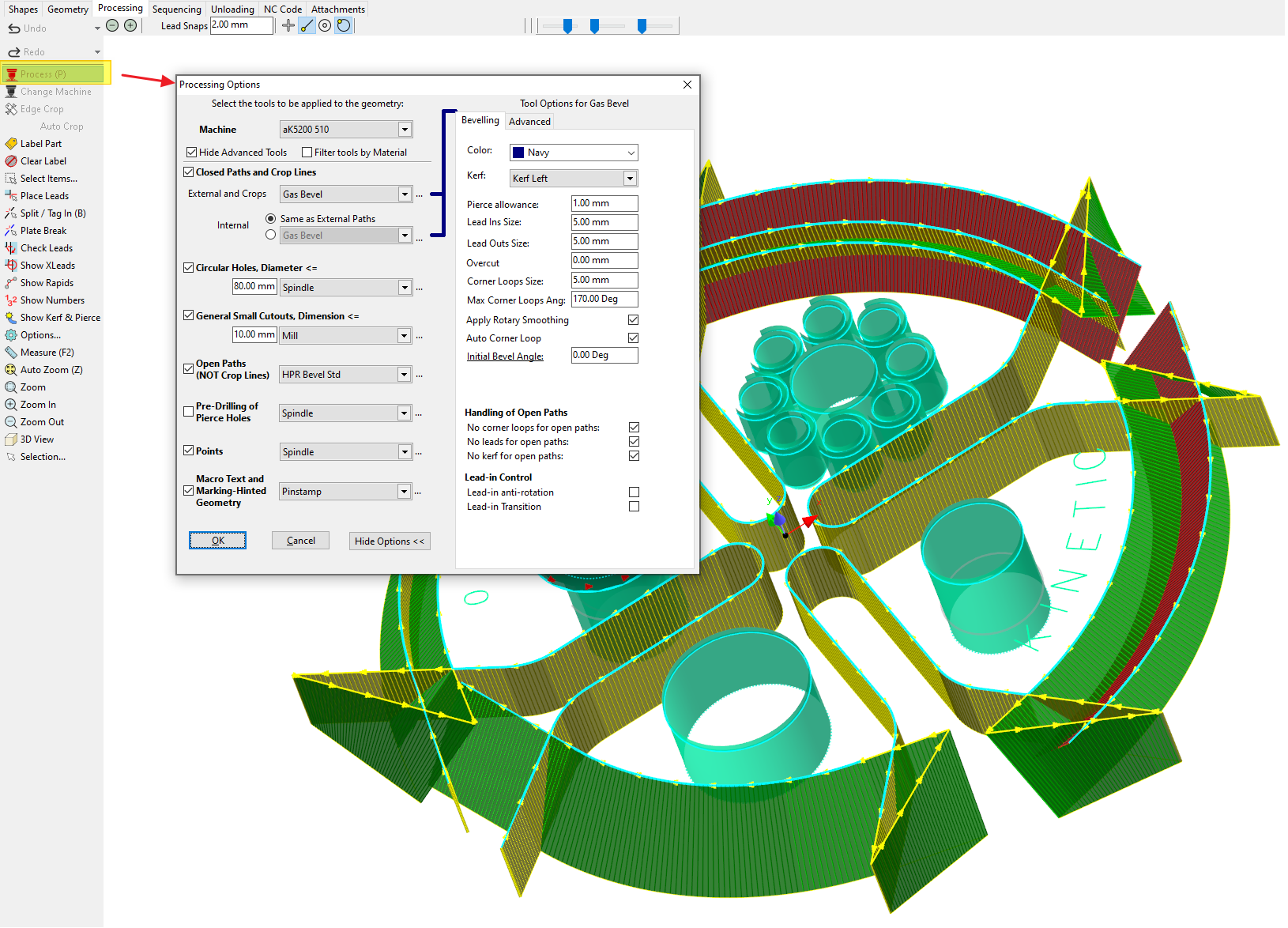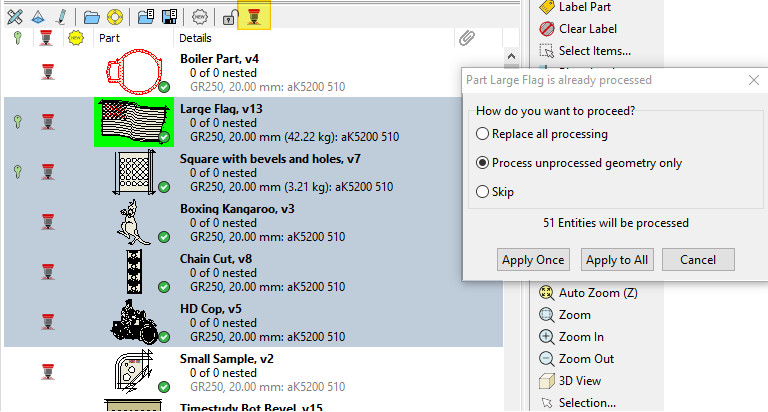Processing (ie tool paths, spindle operations) can be applied to parts or to plates.
Processing can be applied to entities from a single part or plate open within the Processing Editor or directly to multiple parts or plates open in the explorers. Generally the processing editor provides more control over what is processed and how, and more feedback as to what has happened, and manual modification of the processing, while processing in the explorers only allows set of automatic processing options to be applied globally to the selected parts and plates, with no manual interaction.
Primecut gives you the ability to nest part geometry on plates, and apply processing to the plate, or process the part geometries first, then nest the processed parts on the plate. So:
•Should you process the parts before nesting them?
•Or should you nest the part geometry on plates, then process the plates?
•Or a mixture of the two?
In the early days of Primecut. before Flexible Leads, the recommendation was to not process parts unless they had technical processing (beveling and/or non-trivial drilling or milling), so that the leads would not interfere with the nesting (the nesting would need to account for the part and its leadin and leadout (and any corner loops or other processing artifacts), which would often lead to irregular nests). Flexible Leads cause nesting to ignore the leads while nesting, and to move and shribnk the leads if necessary to fit the nest, much the same as if the parts were nested unprocessed and the plate processed. The choice now is really up to the user, however we would still recommend parts with technical processing be pre-processed before nesting.
1.Parts are more consistently processed.
2.Repeatability of re-use parts improved.
3.In a multimachine environment, parts can be directed toward a particular machine by processing them for that machine
Arguments For Plate Processing
1.Part processing may be more work, processing part by part (Not so bad if parts have simple processing applied via the explorer?)
2.Commonline, Bridging and other multipart cutting techniques are best done on the plate. (See SmartCluster)
A mixture of processed and unprocessed parts will work well for most organizations. Partially processed parts (eg internals only) can also be used, but care must be taken to make sure the unprocessed part geometry is indeed processed at the plate level.
Processing in the Processing Editor
If you press the Process button (shortcut is the P key):
▪When some items of geometry are selected, then only those selected items will be processed.
▪While nothing on the screen has been processed and nothing is currently selected, then when you press the Process button all items on the part or plate will be processed.
▪While nothing is selected, but some items are already processed, only those which have not yet been processed will have processing applied to them.
The Processing Options dialog below has checkboxes which can subset the selection to be reprocessed. (Closed Paths and Crops for example is what most cutting gets applied to). Each tool select to be used has options in the right hand pane.

Select one or more items(parts or plates) to process, then click the process button as shown. The items to be processed must be fully loaded and locked in order to be processed, for parts in a workorder this may involve creating a new revision. If any of the items selected already contain processing you will be prompted whether to replace the existing processing, process only the unprocessed geometry, or skip processed parts altogether, as shown below where 5 parts have been selected, before the process button (highlighted) was selected:
